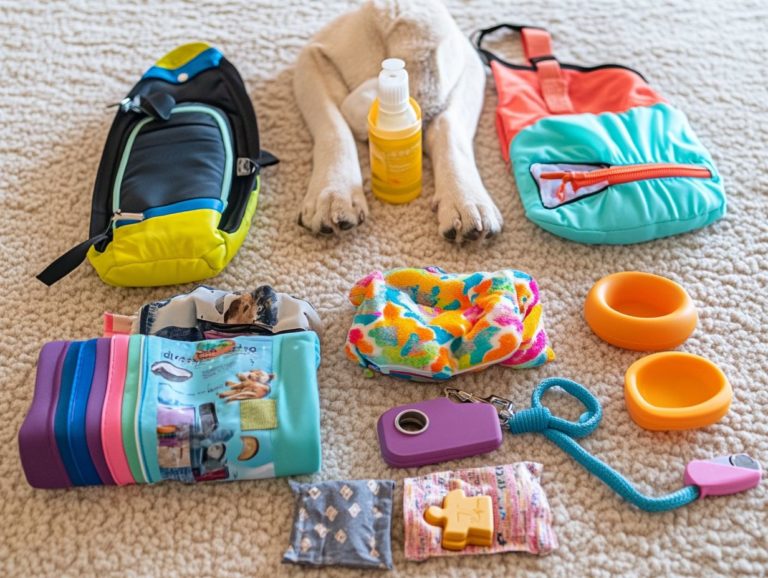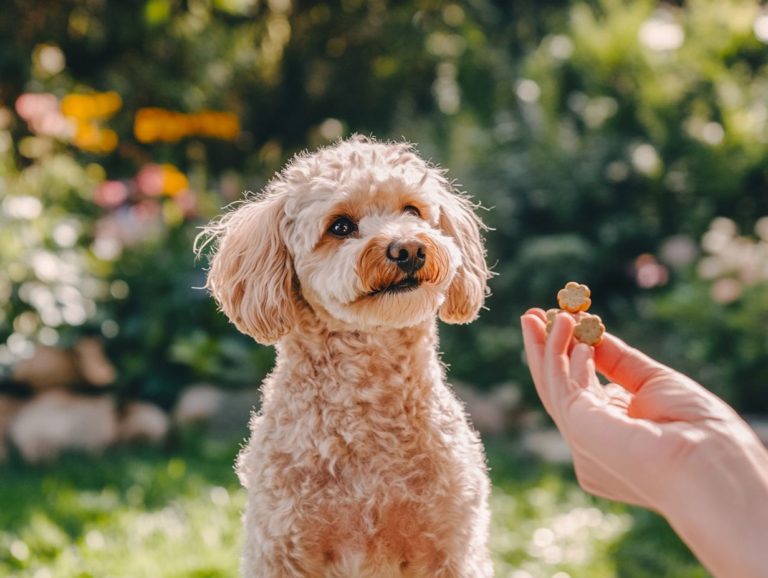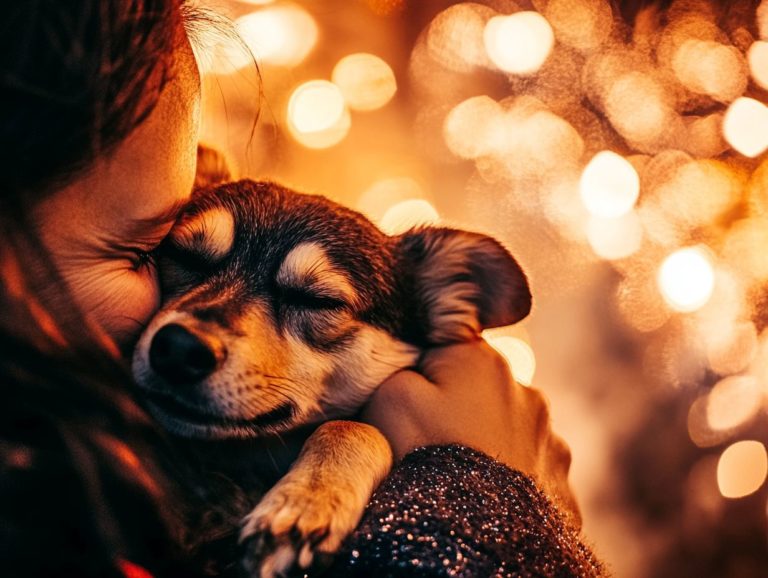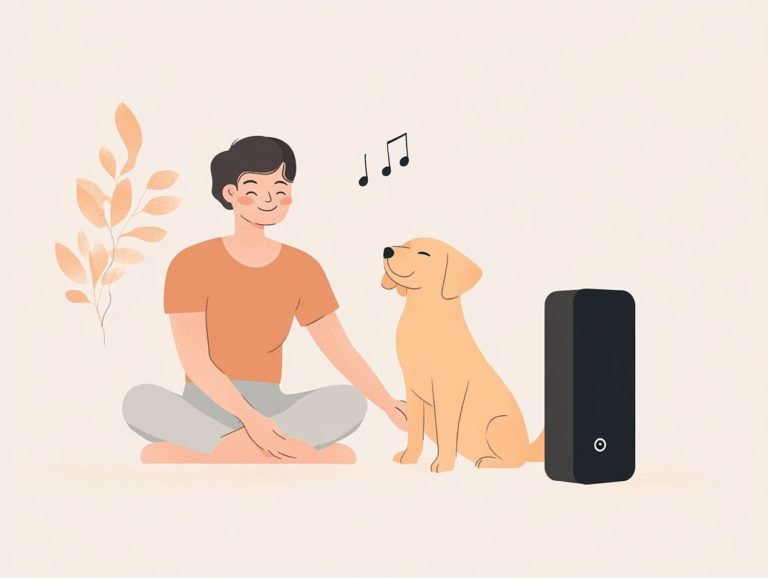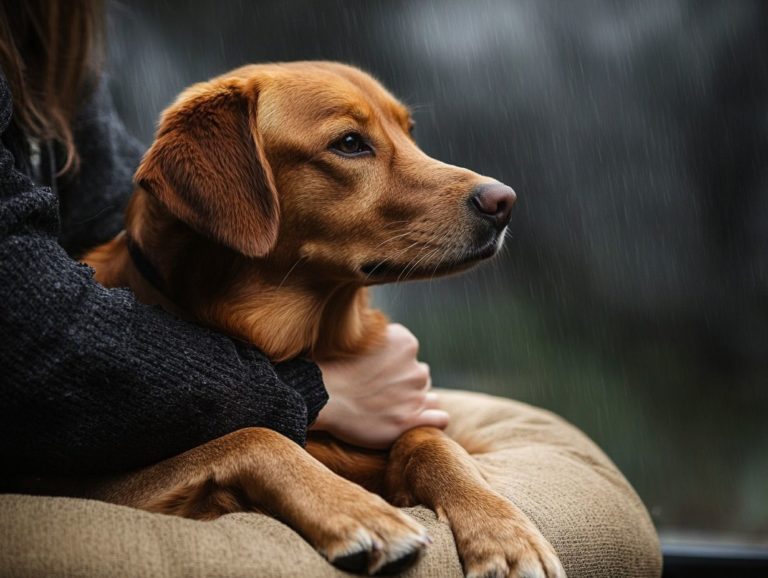How to Support Your Anxious Pet After Training
Pet anxiety is a widespread concern that can significantly impact the well-being of your furry companions. Understanding the causes and symptoms is your first step toward helping them feel more secure in their environment.
Prepare to explore exciting training methods that can transform your pet’s anxiety! This article covers effective training methods tailored specifically for anxious pets, along with practical support strategies to create a calming atmosphere.
It also examines alternative therapies and professional assistance options to ensure your pet copes and thrives.
Contents
- Key Takeaways:
- Understanding Pet Anxiety
- Training Methods for Anxious Pets
- Post-Training Support for Anxious Pets
- Creating a Calm Environment
- Implementing Positive Reinforcement
- Additional Strategies for Supporting Anxious Pets
- Seeking Professional Help
- Frequently Asked Questions
- What is anxiety in pets?
- How does training affect pet anxiety?
- What are some signs of anxiety in pets after training?
- How can I support my pet’s anxiety after training?
- Are there any natural remedies to help with pet anxiety, such as using Adaptil or a ThunderShirt Anxiety Jacket?
- When should I consult my veterinarian about my pet’s anxiety?
Key Takeaways:

- Recognize the causes and symptoms of pet anxiety to better understand your pet’s behavior.
- Effective training methods, such as positive reinforcement (rewarding good behavior to encourage it) and calming techniques, can help alleviate anxiety in pets.
- Creating a calm environment and seeking professional help or alternative therapies can provide additional support for anxious pets after training.
Using these techniques can lead to a happier, more relaxed pet!
Understanding Pet Anxiety
Understanding pet anxiety is essential for you as a pet owner, especially when tackling issues like dog anxiety and separation anxiety. These conditions can present themselves in numerous ways, from anxious behaviors to aggression and even physical symptoms.
By recognizing the early signs and grasping the reasons behind your dog s anxiety, you can improve the effectiveness of your training methods and interventions. This leads to a happier, healthier companion.
Causes and Symptoms
The causes of dog anxiety can vary significantly. Common examples include separation anxiety due to changes in routine and fear-related anxiety from past trauma or unfamiliar environments.
Things around your dog can really affect how they feel; loud noises, new household members, or even a simple change in scenery can heighten your dog s feelings of unease. Some dogs are also naturally more anxious, making them more vulnerable to stressors.
Recognizing the symptoms is crucial for effective intervention. Signs of anxiety may present as excessive barking, destructive behavior, or even withdrawal. Early shifts in body language like tail tucking or avoidance behavior can be vital for addressing these issues promptly.
Training Methods for Anxious Pets
Effective strategies like positive reinforcement (rewarding good behavior to encourage it) and slowly getting your pet used to things that scare them can lead to remarkable improvements in your dog s behavior.
These techniques involve gradually exposing your dog to anxiety-inducing stimuli in a controlled environment. This enables them to build confidence and learn to respond in a more positive manner.
Effective Techniques and Approaches
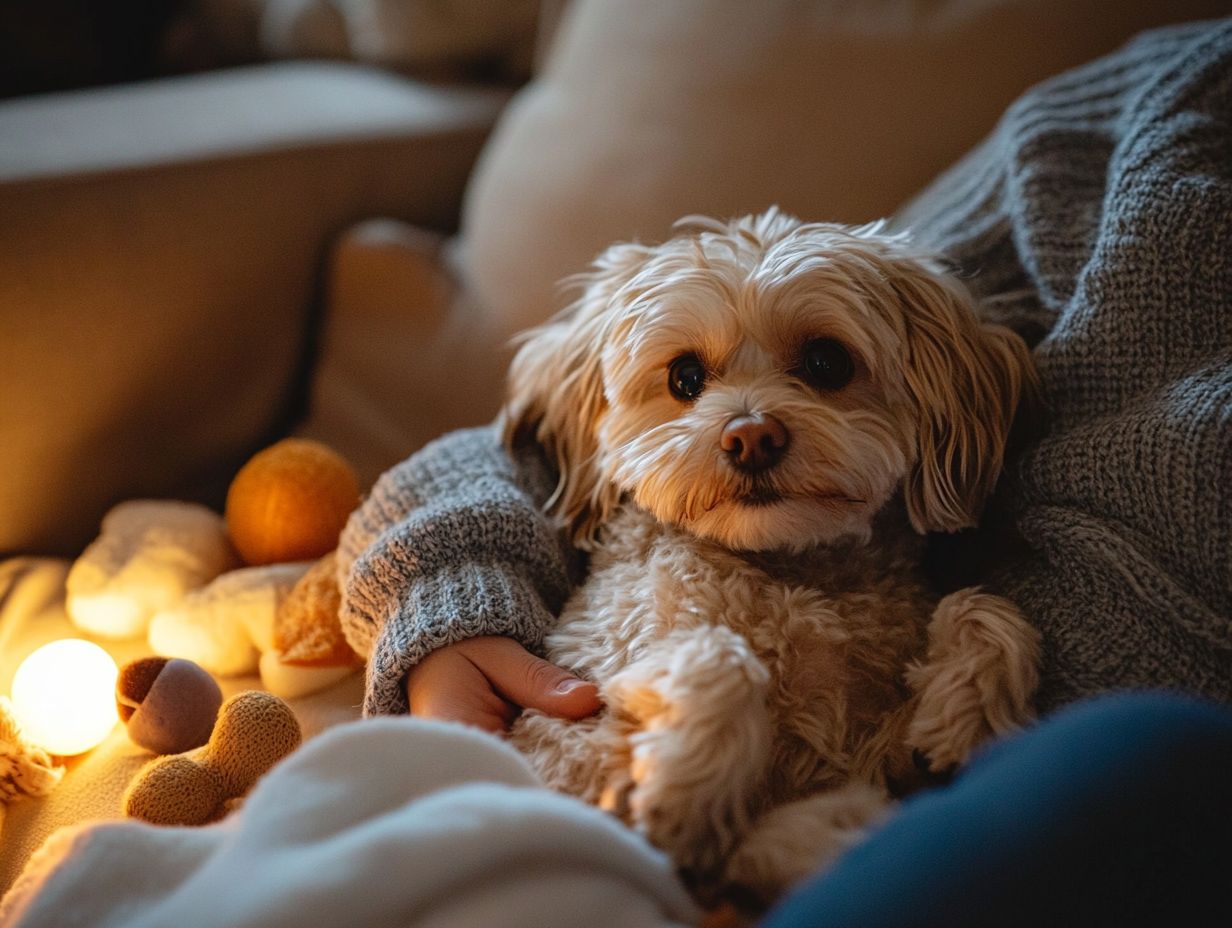
Effective techniques for managing anxious dogs include incorporating calming games and positive reinforcement strategies to create a safe environment.
Engaging in activities that promote relaxation, such as scent games or gentle tug-of-war, can alleviate your pet’s anxiety while strengthening your bond. Additionally, learning how to use rewards to train anxious pets can enhance your training approach. Understanding dog body language is essential; recognizing signs like a tucked tail, raised hackles, or avoidance will help you approach training more effectively.
For example, using treats during calm moments not only reinforces positive behavior but also helps mitigate stress triggers. Establishing consistent routines and providing safe spaces will further enhance your dog’s emotional well-being.
Post-Training Support for Anxious Pets
Post-training support is crucial for sustaining the advancements achieved during training sessions. By creating a serene and secure environment, you can significantly enhance your anxious dog’s overall well-being through techniques for training anxious senior pets.
Start using these techniques today to see a happier, more relaxed pet!
Creating a Calm Environment
Creating a calm space for your anxious dog starts with establishing a safe, tranquil area where they can retreat during stressful moments. This step is vital, and it s often best accomplished by utilizing dog crates or designated quiet spots filled with soft bedding and familiar scents.
Incorporating calming games can help your canine companion. Engaging activities like puzzle toys or scent trails stimulate their minds and promote relaxation.
Maintaining a consistent routine is essential for fostering a sense of security. By keeping feeding, playtime, and relaxation periods regular, you help your dog know what to expect. This can significantly reduce anxiety and allow them to feel more at home in their calming sanctuary.
Implementing Positive Reinforcement
Implementing positive reinforcement techniques is crucial for addressing anxious behavior in your dog and ensuring long-term improvement. Additionally, using music to calm anxious pets during training can enhance this method by encouraging desirable actions and strengthening the bond between you and your furry friend.
For example, when your dog remains calm in a potentially stressful situation, rewarding them with treats or praise reinforces that positive reaction. Use consistent commands and gradually expose your dog to anxiety-inducing scenarios at a comfortable pace. Additionally, exploring the benefits of professional training for anxious pets can enhance these techniques, such as clicker training, where a click sound signals a reward and can be especially effective.
By incorporating these strategies, you can create a supportive environment that reduces anxiety and nurtures confidence and joy in your canine companion, highlighting the role of trust in training anxious pets.
Additional Strategies for Supporting Anxious Pets
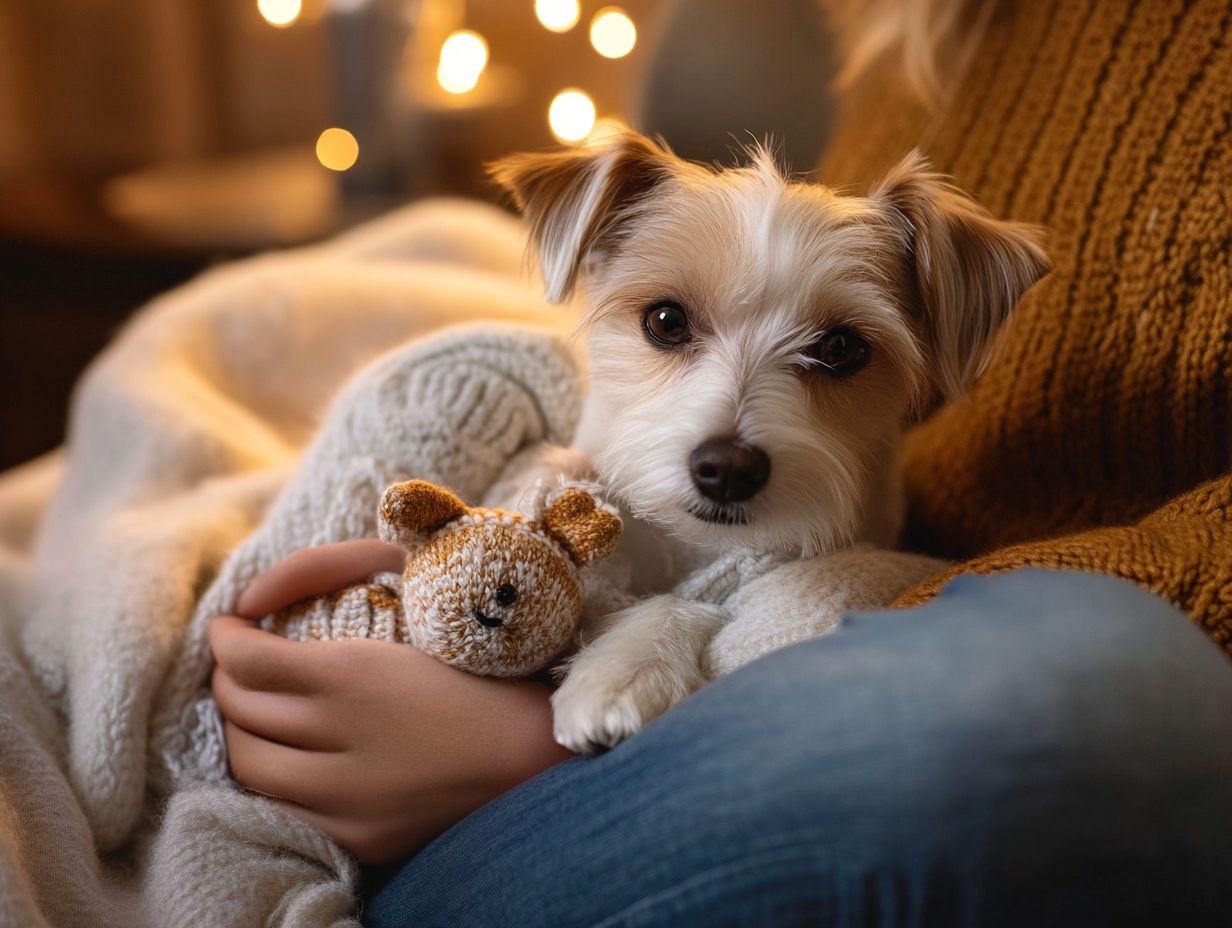
Incorporating alternative therapies and supplements alongside traditional training methods can significantly enhance the support you provide for anxious pets. Understanding the science behind training anxious pets with this holistic approach addresses their specific needs and fosters a more balanced environment for managing their anxiety effectively.
Alternative Therapies and Supplements
Alternative therapies and supplements, such as CBD oil and Adaptil, can alleviate anxiety in dogs and serve as valuable complements to conventional training methods.
These approaches offer potential stress relief and contribute to the overall well-being of your canine companions. CBD oil, derived from hemp, interacts with your dog’s endocannabinoid system, which helps regulate mood and may reduce anxiety symptoms, resulting in a calmer demeanor during stressful events like thunderstorms or fireworks.
Adaptil mimics the calming pheromone that mother dogs naturally produce, providing comfort to both puppies and adult dogs. This can be especially beneficial for anxious dogs.
When considering these therapies, consult with a veterinarian to determine the appropriate dosage and ensure these options align with your dog’s overall health plan for optimal effectiveness.
Seeking Professional Help
Seeking professional help is often essential when confronting serious cases of dog anxiety, especially if home interventions haven t worked.
In such situations, consulting a veterinarian or an animal behaviorist becomes imperative. These experts have the knowledge and experience to craft a customized approach that caters to your pet’s unique needs.
Look out for signs that indicate professional assistance may be necessary excessive barking, destructive behavior, trembling, or withdrawal from social interactions are all red flags. If your furry friend shows physical symptoms like loss of appetite or excessive drooling due to anxiety, it s crucial to turn to a knowledgeable expert.
They can offer effective strategies and, if necessary, discuss potential medical treatments to ensure your pet s overall well-being.
Frequently Asked Questions
What is anxiety in pets?
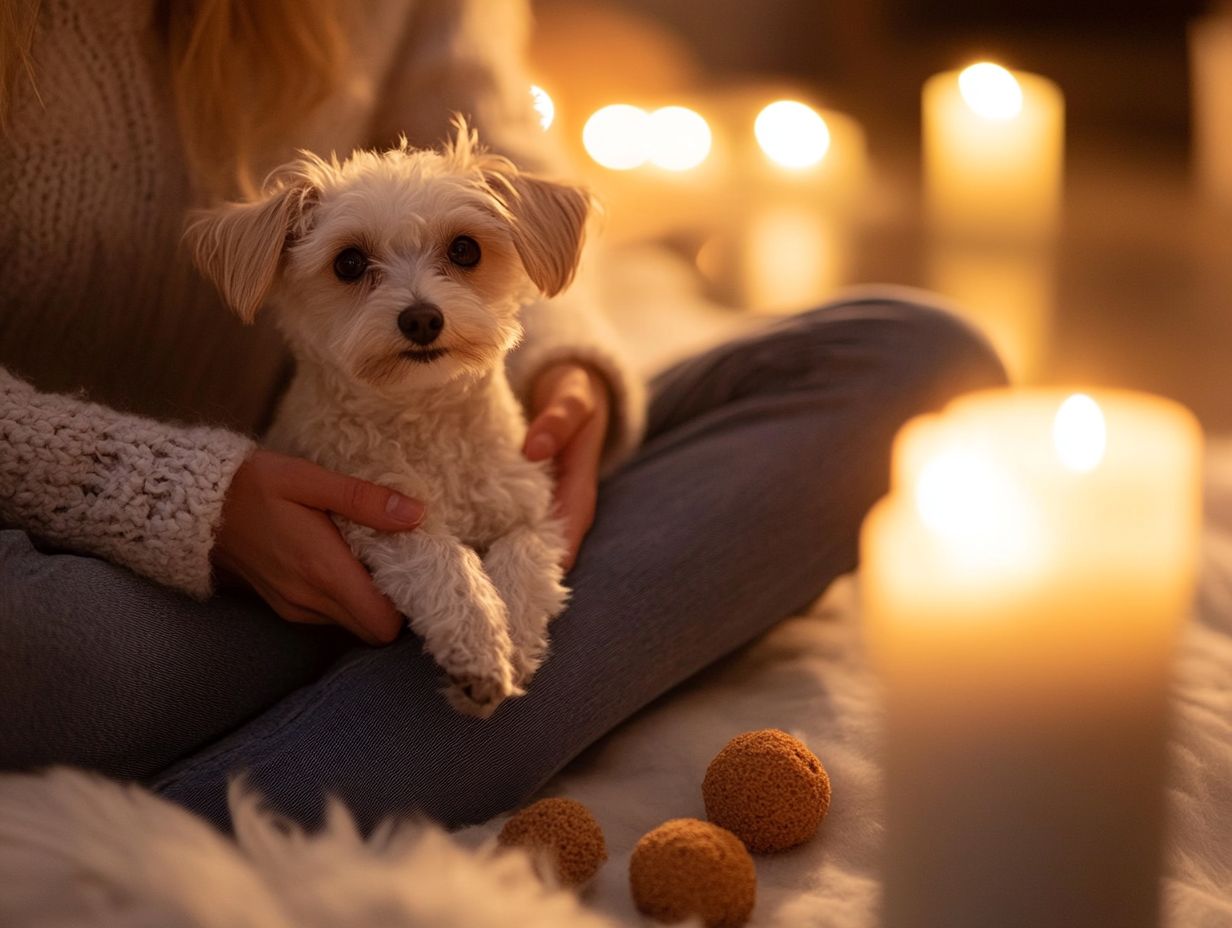
Anxiety in pets, including dog anxiety, is a state of fear or apprehension caused by an anticipated or unknown threat. It can manifest in various ways, such as excessive barking, destructive behavior, and fearful behaviors in dogs.
How does training affect pet anxiety?
Training your puppy can be stressful. It requires them to learn new behaviors and can involve unfamiliar environments and people, which may trigger their anxiety, especially in dogs with fear-related anxiety. If you notice this happening, it’s important to know what to do if your pet’s anxiety worsens.
What are some signs of anxiety in pets after training?
Signs of anxiety in pets often show as excessive panting, trembling, pacing, hiding, or displaying destructive behavior. They may also become more aggressive, exhibit symptoms of cognitive dysfunction (a condition affecting an aging pet’s mental abilities), or have difficulty focusing.
How can I support my pet’s anxiety after training?
To support your anxious dog’s well-being after training, create a calm and safe environment. Provide a quiet area for them to retreat to, use calming pheromone sprays or diffusers like Adaptil, and consider implementing tips for training anxious pets at home to avoid overly stimulating activities.
Are there any natural remedies to help with pet anxiety, such as using Adaptil or a ThunderShirt Anxiety Jacket?
Yes, you can explore natural remedies that help with pet anxiety. Consider using calming essential oils like lavender and chamomile, offering food-stuffed chew toys, and incorporating calming games. CBD oil or supplements, along with herbs such as valerian or passionflower, may also be beneficial.
When should I consult my veterinarian about my pet’s anxiety?
If you notice your pet’s anxiety affecting their everyday activities, it may be time to seek professional help. A veterinarian or animal behaviorist can help you recognize early signs of anxiety and provide expert advice on best practices for pet anxiety training to manage problem behaviors.

